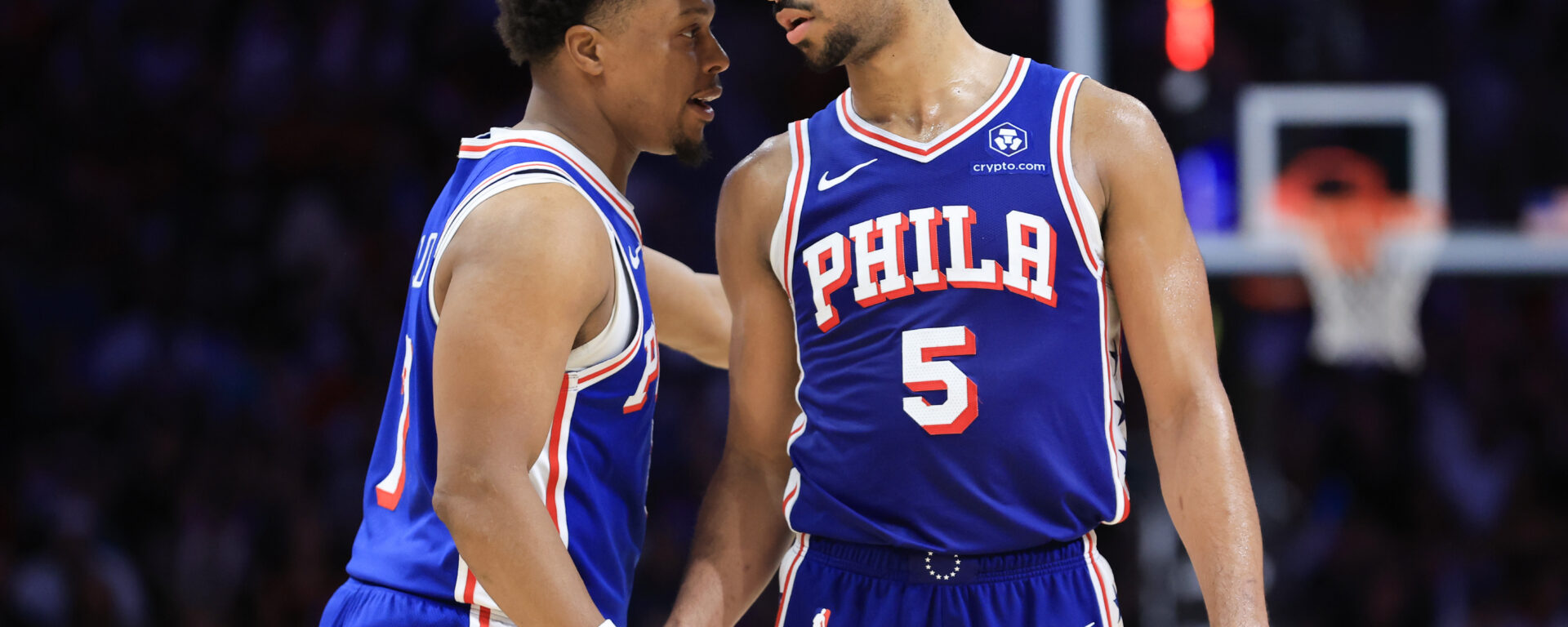
We’re less than four weeks away from the start of training camp, yet the Sixers still have two open roster spots. One of those is reserved for Quentin Grimes, who remains in a restricted-free-agency standoff much like Jonathan Kuminga, Josh Giddey and Cam Thomas. The other might not get filled at all before the season starts.
On Thursday, Jake Fischer of The Stein Line said new Brooklyn Nets forward Haywood Highsmith could be on the move again between now and the Feb. 5 trade deadline. In the original version of his article, he noted that since Highsmith is earning only $5.6 million, a team could absorb him using its mid-level exception—either the $5.7 million taxpayer MLE or the $14.1 million non-taxpayer MLE—without having to send salary back to Brooklyn.
“A team like the 76ers, for example, that has planned to take its taxpayer mid-level into the season rather than spending it this summer can use the exception during the season to absorb the salary of a player like Highsmith via trade without having to send any salary the other way,” Fischer wrote.
Curiously, that line is no longer in the latest version of his article. Perhaps the Sixers let him know that they’re still open to spending the MLE this summer once they re-sign Grimes? Either way, they must resolve the Grimes situation first before they even consider using it.
If a team uses the non-taxpayer MLE, it becomes hard-capped at the first apron ($195.9 million this season). If a team uses the taxpayer MLE, it becomes hard-capped at the second apron ($207.8 million). With 13 players on standard contracts, the Sixers are currently $10.05 million under the first apron and $21.9 million under the second apron. If they spent the full $5.7 million taxpayer MLE, that would leave them only $16.2 million below the second apron.
At the moment, the Nets are the only team that could offer Grimes more than the non-taxpayer MLE. As long as they weren’t interested in signing Grimes, the Sixers theoretically have enough flexibility under the second apron to spend the taxpayer MLE and still re-sign Grimes. However, they’d leave the door open for the Nets to come over the top with an offer sheet that they couldn’t match unless they dumped salary elsewhere.
Besides, the free-agent market has largely dried up at this point of the offseason. Outside of Kuminga, Giddey and Thomas—none of whom the Sixers could pry away with only the taxpayer MLE—many of the best options have been heavily linked to the Warriors in recent weeks. Once the Warriors resolve Kuminga’s restricted free agency, they’re reportedly poised to sign some combination of Al Horford, Malcolm Brogdon, De’Anthony Melton, Gary Payton II and Seth Curry.
Malik Beasley is by far the best remaining unrestricted free agent, although off-court issues have complicated his standing at the moment. Although ESPN’s Shams Charania recently reported that Beasley “is no longer a target of the federal gambling investigation conducted by the Eastern District of New York,” Alex Schiffer of Front Office Sports reported he’s “still considered a ‘subject’ of the investigation” and could still be charged with a crime and/or punished by the NBA. While Beasley would be a great value at the $5.7 million taxpayer MLE, another guard is the last thing that the Sixers need, especially if they re-sign Grimes.
Outside of Beasley, the pickings are relatively slim. Trey Lyles, Precious Achiuwa and Russell Westbrook are among the best remaining options, although at this point in the offseason, none of them would likely command more than a minimum deal.
Team president Daryl Morey has long preferred to keep one roster spot open heading into the season to preserve flexibility for in-season moves. That could allow the Sixers to swing a 2-for-1 or 3-for-2 deal without having to shed a contract elsewhere, or they’d have an open roster spot to convert Dominick Barlow or Jabari Walker from a two-way deal to a standard contract. And as Fischer noted, the league’s latest collective bargaining agreement now allows teams to use MLEs as trade exceptions.
However, unused MLEs do begin to prorate downward on Jan. 10 each season. From that date forward, the taxpayer MLE will reduce in value by $32,672 each day. So, while Highsmith would fit into the taxpayer MLE for now, his $5,616,000 salary would be too large for the prorated taxpayer MLE by Jan. 13. If the Sixers hold on to their taxpayer MLE until the day of the trade deadline (Feb. 5), it will shed roughly $880,000 in value by then.
The Sixers could still use their taxpayer MLE to sign a free agent in-season as well. However, if they cross the first apron once they re-sign Grimes, they won’t be allowed to sign any player on the buyout market who was previously earning more than the non-taxpayer MLE. They could also face plenty of competition on the trade and free-agent market with their exception, as a number of other teams have yet to touch theirs as well.
So, don’t be surprised if the Sixers eventually sign Grimes and then call it a summer, leaving one roster spot open heading into the season. The real question is whether they’ll actually spend their MLE at some point during the year. Allowing it to expire would be another wasted asset, but if Paul George and Joel Embiid are in and out of the lineup again all year, the Sixers likely won’t have much of an appetite to add to their luxury-tax bill.
Fret not, though. I’m prepared to roast their asses if (when?) that happens.
Unless otherwise noted, all stats via NBA.com, PBPStats, Cleaning the Glass or Basketball Reference. All salary information via Salary Swish and salary-cap information via RealGM.
Follow Bryan on Bluesky.

